A State of Customer Experience in the Energy Sector
Customer service tools and trends in Energy/Utility companies.
Last Updated: 24.5.2021
Customer service tools and trends in Energy/Utility companies.
Last Updated: 24.5.2021
For many brands 2021 is the year to invest in customer experience. A March 2021 survey of 1,920 business professionals reported that improving customer experience is the number one priority for brands in the next 5 years.
But why?
Better CX brings brands higher revenues. Across all industries, 81% of consumers are willing to spend more on a business that guarantees better customer experience.
Customer experience also influences buying behaviour: 49% of buyers have made impulse purchases after receiving a more personalized service.
Customer service is an integral part of CX. Ensure your audience gets the service they want. Give customers fast ways to find and contact you.
Response speed and resolution time are two crucial factors that can make it or break it. Other important factors are obviously the ease of using the support channel, the response rate and the quality of the response received.

In this report, we studied the largest energy sector companies operating in Sweden. We wanted to find out what level of support their customers can expect when reaching out online.
We examined the communication channels they use, identified channels with the fastest and slowest response and resolution times, and took a look at the overall quality of support they provide.
Research Methodology
We chose 19 of the most successful Swedish-based Energy sector businesses to study how their customer service performs in a real-world scenario.
We acted as a normal customer, visited the company websites and tried their online customer service options. We asked for information about their products, and recorded how successfully they handled the request.
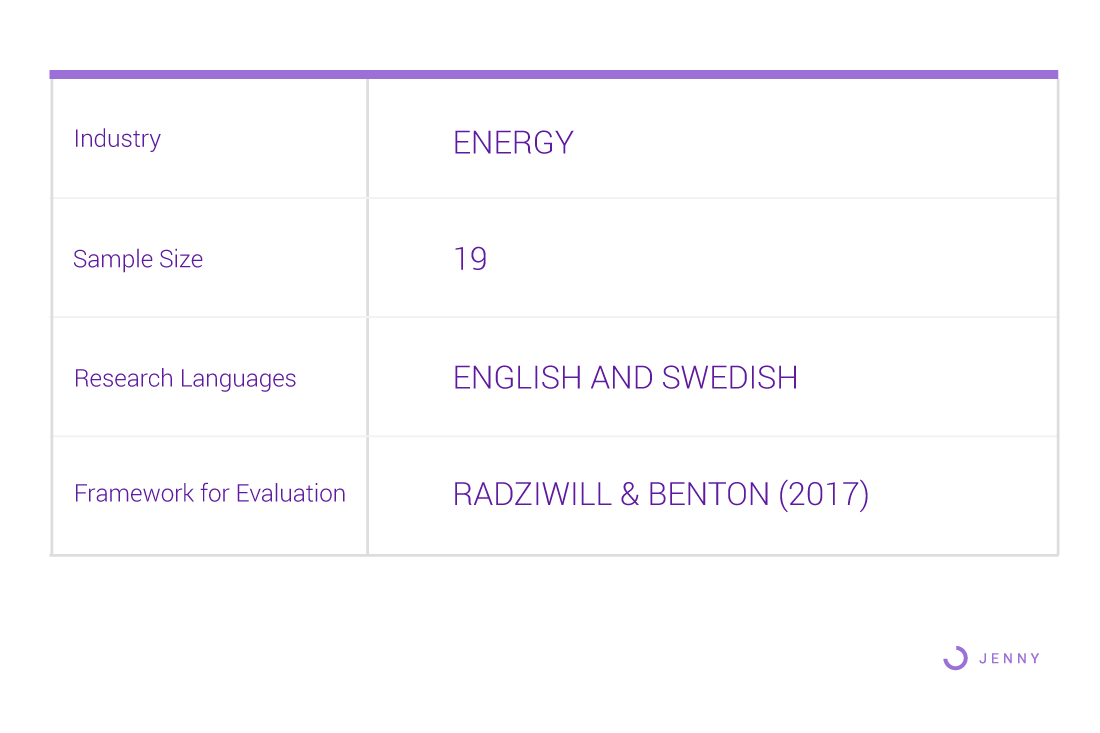
CHAPTER 1:
Energy Sector Priorities for Customer Service in 2021
Ensuring that you provide great customer care is critical to any business, and it’s the key to attracting and retaining customers. Energy sector is no different.
Customer loyalty is no longer based solely on the product quality or the pricing model. Alternatively, customers stay with brands due to the experience they receive. If your company can not meet their expectations, you risk losing clients' loyalty, and all the value it can bring.
Based on our experience and on customer interviews conducted, here are the main Energy sector companies priorities in customer service for the upcoming year:
- Guarantee multichannel seamless support round-the-clock.
- Use customer service agents’ time and knowledge more effectively to solve more complex matters faster.
- Make services more straightforward to the end customers.
- Provide instant, automated answers to commonly asked questions.
- Help choosing the right product/contract faster.
The point is to make the workload more reasonable for our customer service team so that they can provide the best possible service in more complicated matters.
Linda Hay
Head of Customer Service, Göteborg Energi
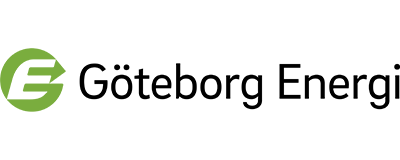
When it comes to optimizing customer service performance, new and modern tools come into play.
Live chat and chatbot platforms are gaining popularity because they interact with customers quickly and in a format they are familiar with. It also opens up new avenues for brands to automate over 90% of their customer service tickets.
FAQs and Knowledge bases on the website have also proven effective, helping customers solve simple issues on their own, and saving customer support agents' time for more complicated issues. Still, many companies don't use these tools at all.
Which leads us to the next question:
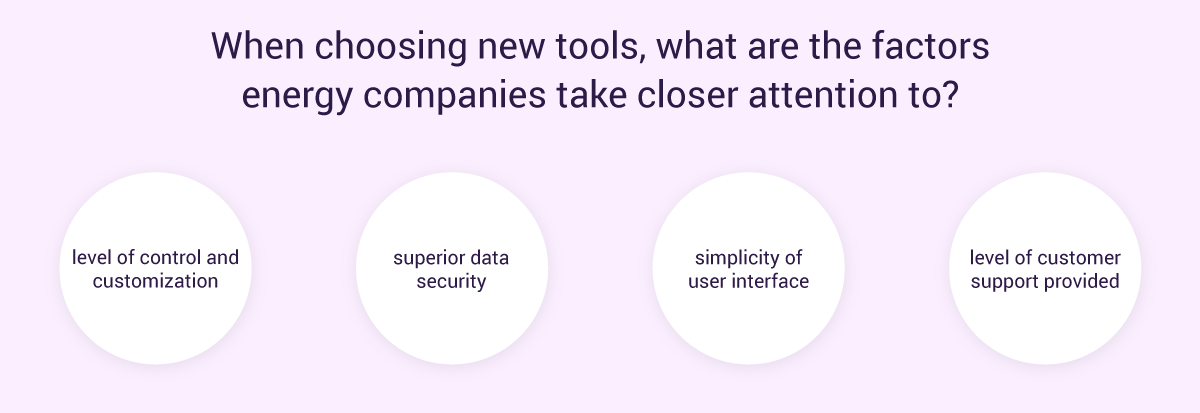
CHAPTER 2:
Online Customer Service Experience Benchmark
1. Number of Communication Channels Used
You don’t need dozens of communications channels available on your website. Yet you want to give visitors a choice. As a rule of thumb, a truly customer-centric company should provide at least one way of contacting support directly and one way to find information on their own, using self-service tools.
When applicable, we compared Energy sector companies to a pool of 363 Nordic Nasdaq-listed companies from our previous research: Customer Experience Trends report, 2021.
Most Energy sector companies studied have 3-4 online support tools available on their website.
However, a significant percentage of Energy companies (15%) use only one tool for customer service communication. This compares negatively to the Nasdaq-listed companies in the Customer Experience Trends Report, where less than 2.3% of companies have only one customer service tool.
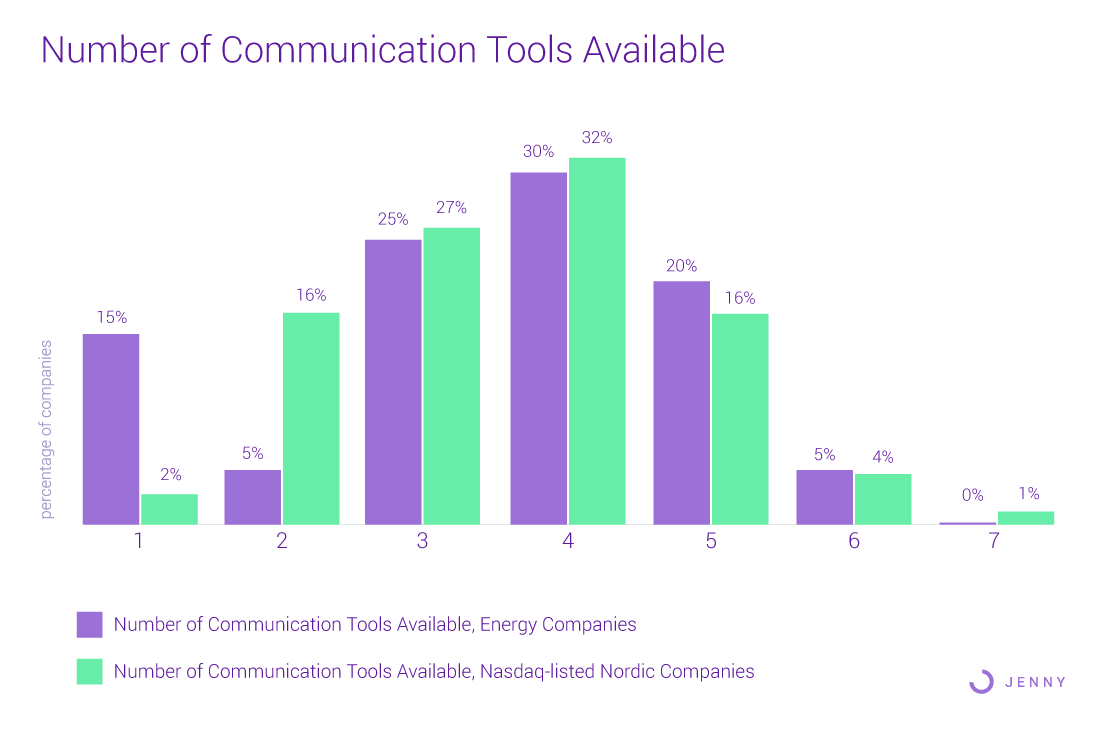
2. Digital Customer Service Channels Usage
What support channels do Energy sector companies offer their customers?
FAQs and Knowledge Bases are the most popular solutions, provided by 85% of brands. Traditional methods, like Online Forms and Email are also used widely.
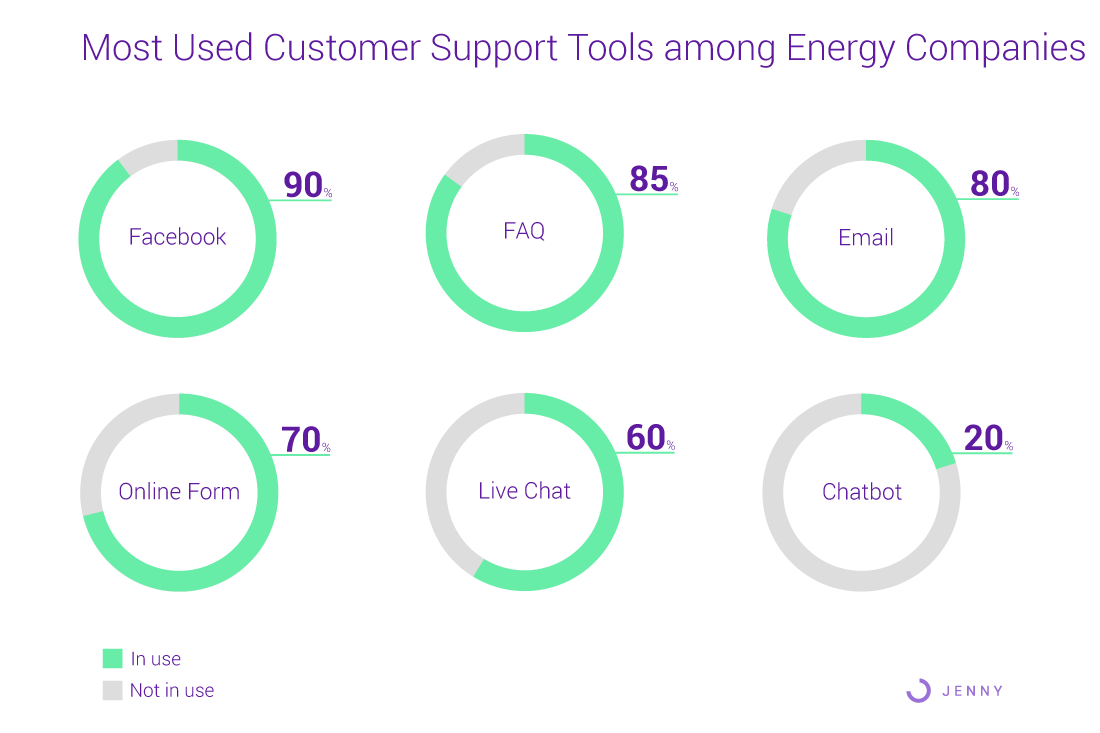
Conversational methods of support, such as Live Chat and Chatbots are not as widely used.
Compared to other industries, the Energy sector utilises FAQs, live chat and chatbots more than Nasdaq-listed companies in other sectors.
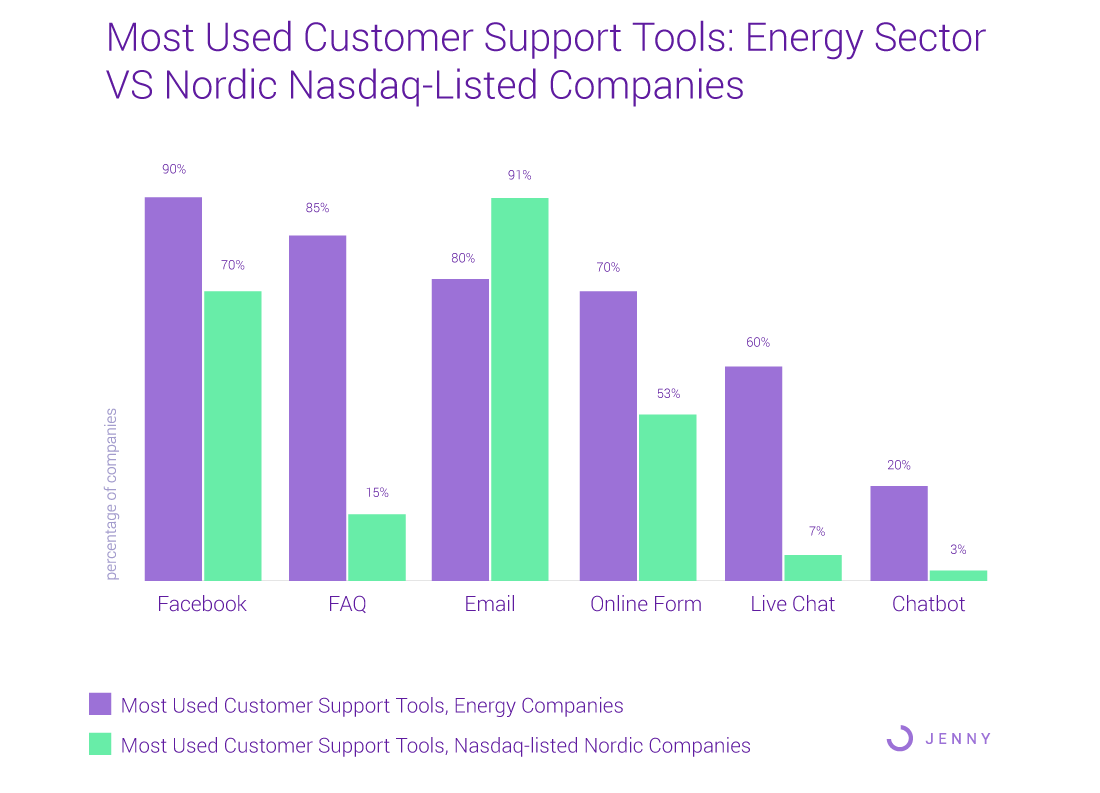
3. Online Customer Service Opening Hours
When can I contact your support? And when should I expect to get a reply?
Even though Energy companies provide a good range of online customer service tools, they tend to fail at communicating their customer service opening hours openly.
55% of companies studied don't state their office hours on the website at all, leaving customers guess when they will receive an answer.
While 45% of companies state their opening hours clearly on the website, none of the companies studied provide 24/7 customer support.
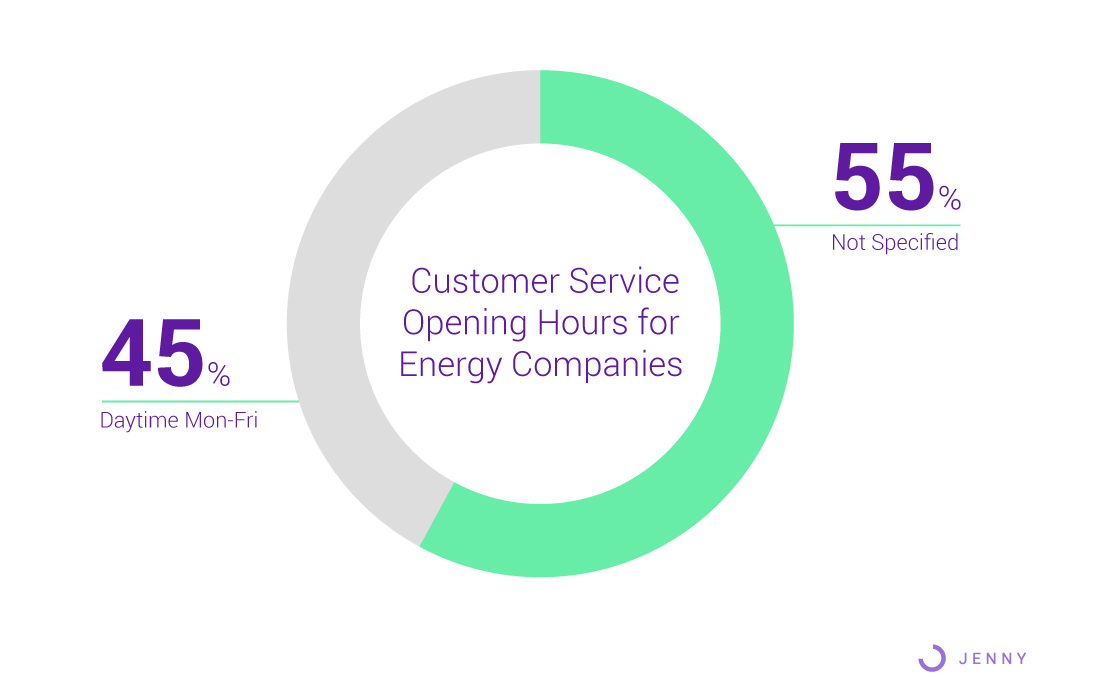
4. First Response Times
First Response time is an essential metric to track in customer service channels. It lets the customer know that your brand is there to take care of them and, in digital channels, provides feedback regarding their request while they wait for a solution for their problem.
When looking at how quickly Swedish energy companies respond to their customers for the first time, it’s clear that conversational support methods provide the fastest first response rate both on average and on a median scale.
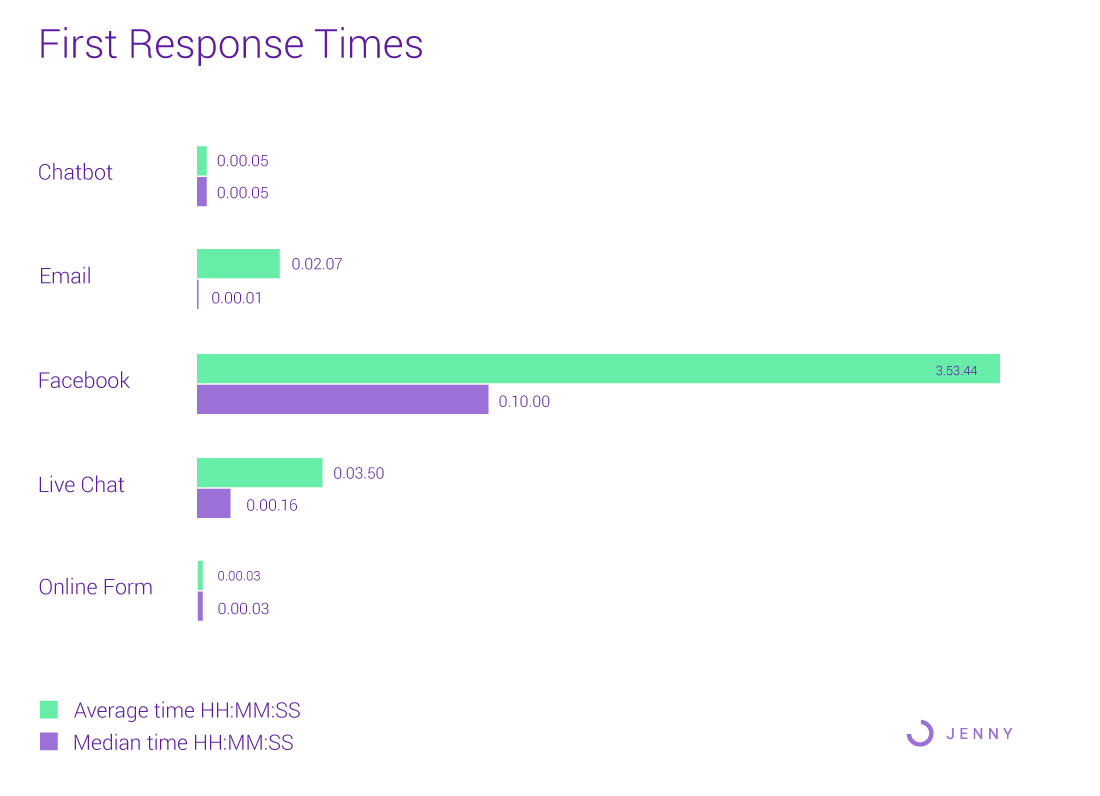
5. Resolution Times
Resolution time measures how quickly your agents resolve requests from your customers. It has a direct impact on your customer service quality.
Chatbots and Live Chat easily top resolution time metrics on a median level by 85x.
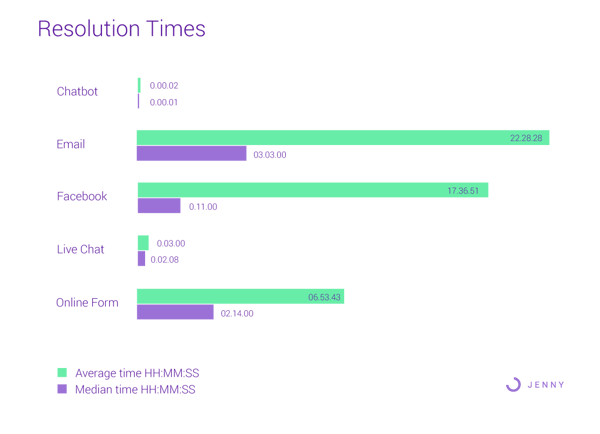
Beware of Not replying to Customers
Customer issue resolution times drop significantly when moving away from conversation-based channels. We found that the possibility of a company not responding to a customer rises significantly in non-conversational channels. Email and Contact form were the highest offenders in this, but Facebook’s averages were skewed by similar issues.
Live Chat + Chatbot = The Best Combination?
When examining the results above, it’s clear that chatbots and live chat provide the fastest response and resolution times. But what if a company uses both tools at the same time?
This is what Finnish energy company Väre did.
Väre uses both live chat and a chatbot. Both tools operate in the same chat window on their website. A chatbot always greets a customer and starts the dialogue. It then solves easier customer questions at scale and only forwards more complex questions to his human colleagues.
Within three months of implementing the chatbot, it already deflects 94% of customer messages, while 6% of the messages are handled by Väre’s human customer service agents.
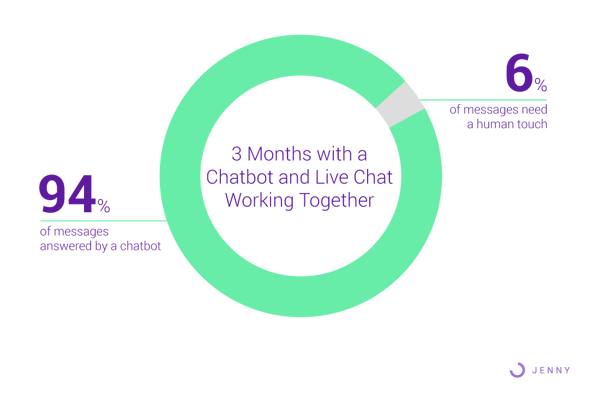 This means that most of Väre's website visitors are served immediately, no matter whether it is night or day, and their issues are dealt with in seconds without needing to contact a human agent.
This means that most of Väre's website visitors are served immediately, no matter whether it is night or day, and their issues are dealt with in seconds without needing to contact a human agent.
6. Response Rate
A vital goal for customer service teams is to address as many customer inquiries as possible.
Our study of Swedish energy companies found that the only channels with a 100% response rate were Live Chat and Chatbot.
Although most Energy sector companies have contact forms (70%) and social media channels (90%) available, the response rate for these online support channels is significantly lower.
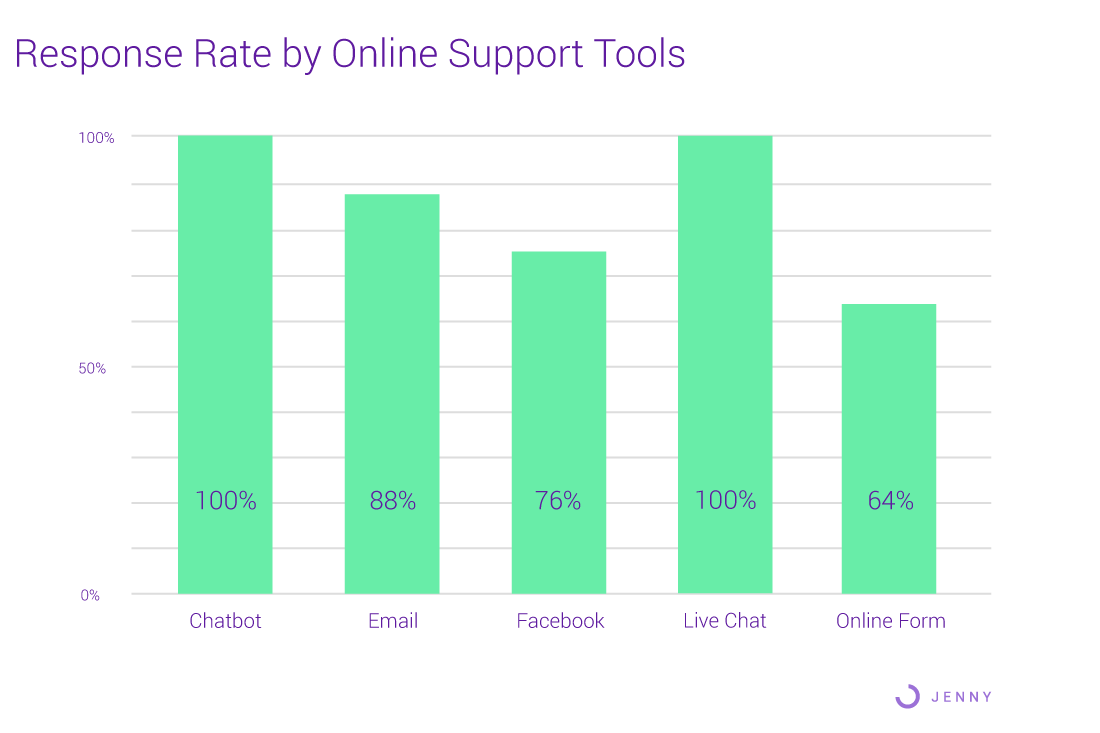
7. How Different Online Support Tools Serve Customers
How do different online customer support tools execute a customer request? Is the contact method easy to use? Does the customer receive a swift answer? What's the level of answer accuracy?
To evaluate energy companies’ customer service, we visited their websites and social media, posing as potential customers and asked simple relevant questions regarding their services.
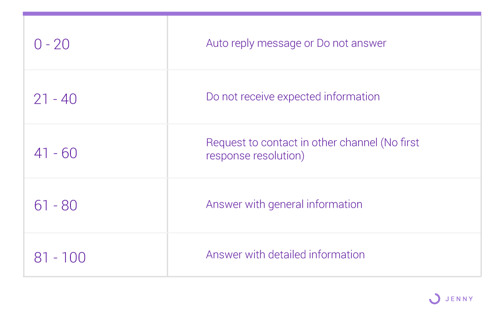
For each company we tested all their available channels from this list:
- Chatbot
- Live chat
- Email support
- Online forms
- Facebook company page
We measured the success rate of solutions/answers by the following scale:
Here are the results we got:
Live chat is clearly a winner, in terms of providing detailed and to-the-point answers to customer questions. Chatbots are not far behind do their job excellently, generally providing detailed relevant information.
Almost all energy companies studied do it right with email support as well: they not only offer email as a possible contact option, but they also managed to give detailed answers to all questions we asked. However, the email request resolution time was significantly longer than for chatbot or live chat support. Email clocked in with a median resolution time of 3 hours, while chatbots and live chat resolve issues in seconds and minutes respectively.
For Facebook and contact forms, brands often fail to resolve customer requests at all. During our test, many companies did not answer our questions and asked us to contact the company using other channels.
Conclusion
This report examined the performance of online customer support tools widely used by the largest energy companies in Sweden. We checked what channels companies use the most, their average response rate, response and resolution time. We also tested their customer service tools and rated their quality of support for customers.
Live chat. 60% of Energy sector companies studied use live chat on their websites. This is no surprise, as live chats perform excellently in customer service. 100% of our test queries were solved when we used live chat to contact brands, and the average resolution time was around 3 minutes.
The three-minute average resolution time is especially impressive given that the customer speaks with a human agent each time.
Live chat provides customers with fast and accurate support and proved a top performer across the tools measured.
Chatbot. When it comes to response rate, response and resolution time, chatbots beat the competition with astonishing results: they answer all (100%) of customer requests in seconds and resolve customer issues in less than a minute. Most impressively, they deliver these results in conversational support without needing a human customer service agent.
When it comes to their answers, chatbots are slightly less accurate than live chat: in 86% of the cases, their answers were to the point and contained all information required.
Despite the fact that chatbots are so accurate and effective, only 20% of energy sector companies utilize this technology nowadays. We learned from the Customer Experience Trends Report 2021 that companies who score highest on customer experience are 3X more likely to leverage automated tools like chatbots in their customer service.
Read about Chatbots for Energy Sector.
Email. Email is widely used by energy sector companies, and 80% of brands studied use email for their customer support. When we performed a test of each company’s service channels, 88% of email service requests got a response..
Our study shows that customers can expect relevant and detailed replies to their emails, but the request resolution time is a whopping 3 hours on a median scale (22 hours on average).
Online forms. When customers contact a company through an online support form, they can expect an automated response in seconds. But receiving a real answer that resolves the question takes approximately 7 hours.
Online forms also showed the lowest response rate: only 64% of our requests were fulfilled in any way.
Social media channels. Social media is the least reliable service channel to contact energy sector companies. Although most companies (90%) have Facebook pages, they don’t tend to support customers or potential customers on social media. A quarter of customer questions submitted through Facebook went unanswered, and in almost 50% of the time a representative directed us to contact the company using an alternative method.
When we managed to get a proper answer through Facebook, it took over 17 hours to get the request solved by a support agent.
Bibliography
Capgemini. 2017. ‘8 in 10 Consumers Willing to Pay More for a Better Customer Experience as Big Business Falls Short on Expectations’. Capgemini Worldwide (blog). 28 June 2017. https://www.capgemini.com/news/8-in-10-consumers-willing-to-pay-more-for-a-better-customer-experience-as-big-business-falls/.
GetJenny. n.d. ‘Customer Experience Trends Report 2021’. Accessed 23 April 2021. https://www.getjenny.com/customer-experience-report-2020.
Radziwill, Nicole, and Morgan Benton. 2017. ‘Evaluating Quality of Chatbots and Intelligent Conversational Agents’, April.
Segment. n.d. ‘Segment-2017-Personalization-Report.Pdf’. Accessed 15 April 2021. http://grow.segment.com/Segment-2017-Personalization-Report.pdf.
SuperOffice, and Toma Kulbytė. n.d. ‘37 Powerful Customer Experience Statistics to Know in 2021’. Accessed 15 April 2021. https://www.superoffice.com/blog/customer-experience-statistics/.



